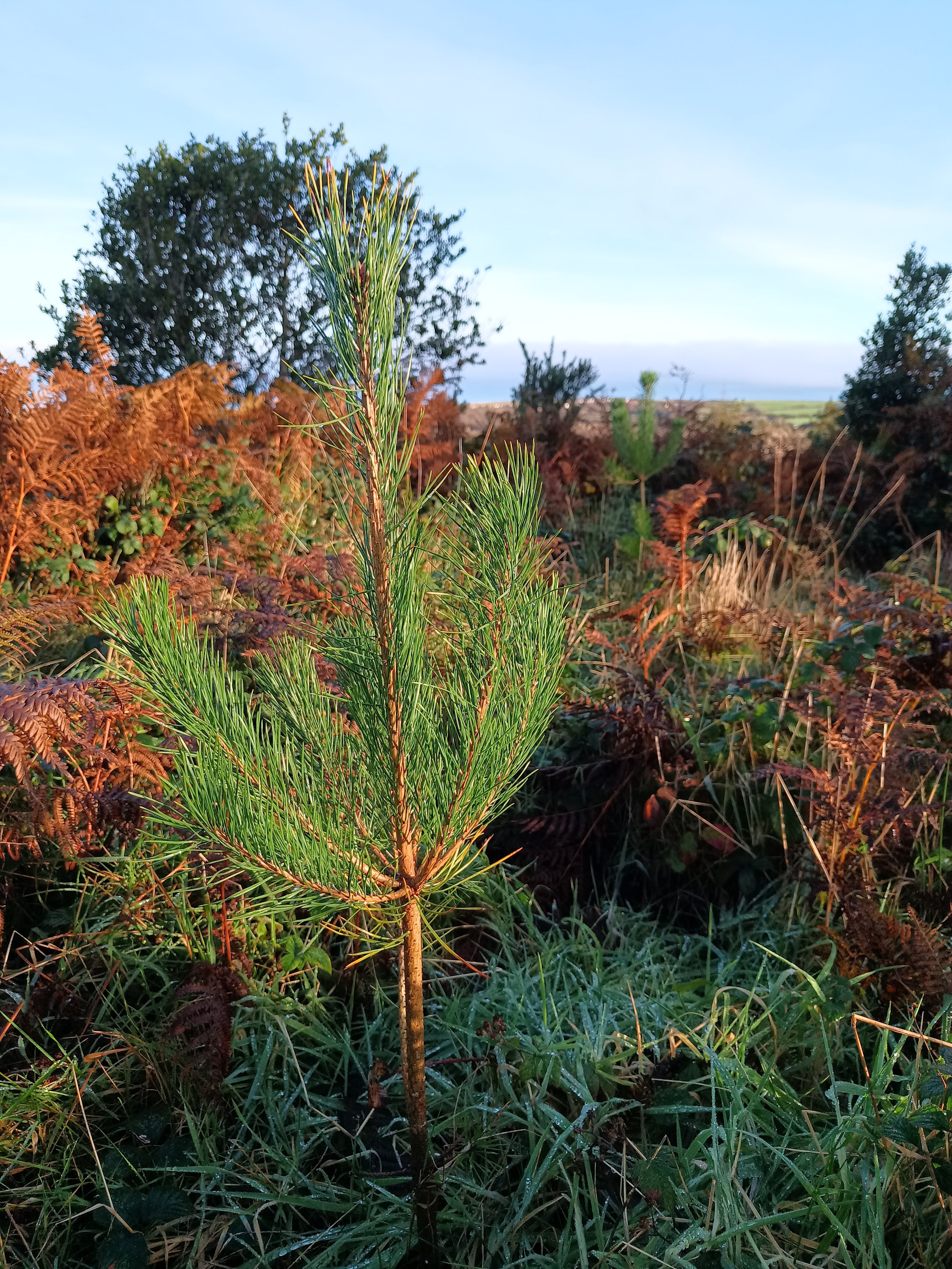The ecological value of Scots Pine
Scots pine (Pinus sylvestris), while not as prevalent as in other European regions, holds a vital place in Ireland's ecological landscape. Its presence supports a rich array of wildlife and contributes significantly to biodiversity.
Scots pine forests provide habitat for a wide range of wildlife, from insects and birds to mammals and fungi. The dense canopy of Scots pine forests creates a unique microclimate, providing shelter from wind and rain and moderating temperatures.
Scots pine forests support a high level of biodiversity by creating a variety of ecological niches, food and shelter for a diverse range of insects and birds. Bark Beetles bore into the bark, and while they can weaken or kill trees, they also create habitats for other insects and fungi.
Similarly, pests such as Pine Sawflies and Pine Weevils also play a role in the forest's nutrient cycle by providing a food source for many other organisms such as birds, bats, small mammals and even predatory wasps - however, they can quickly decimate tree foliage and even kill trees by damaging or introducing disease into the shoots and bark.
Birds such as Crossbills, with their specialised beaks perfectly adapted for extracting seeds from pine cones, and Goldcrests who forage in pine foliage for insects, spiders, and their eggs, are heavily reliant on Scots pine forests. Siskins feed on their seeds, particularly in winter when other food sources are scarce, and Crested Tits often nest in holes in Scots pine trees and feed on insects and spiders found in the bark and foliage.
Scots pine forests provide ideal habitat for Red Squirrels, offering food and shelter in the form of pine cones and tree cavities, and for Pine Martens. These elusive creatures are known to den in Scots pine trees and prey on red squirrels and other small mammals. The presence of Scots pine can also encourage the growth of other native flora, such as heather and bilberry, further enhancing biodiversity.
A young Scots pine recently planted on Cloudforest Five.
Scots pine thrives in specific environmental conditions, preferring well-drained sandy or gravelly soils are ideal, as they allow for good drainage. Scots pine can tolerate poor, acidic soils, which are common in upland areas of Ireland.
Scots pine requires full sunlight for optimal growth and cone production. It is well-adapted to cold temperatures and can withstand frost and snow. It is also tolerant of windy conditions, making it suitable for exposed upland sites. While it can grow at various elevations, Scots pine tends to prefer higher ground in Ireland, where it is less likely to be outcompeted by other tree species.
Scots pine forests provide habitat for a wide range of wildlife, from insects and birds to mammals and fungi. The dense canopy of Scots pine forests creates a unique microclimate, providing shelter from wind and rain and moderating temperatures. The extensive root system of Scots pine helps to stabilize soil and prevent erosion, particularly on slopes and in areas with sandy soils.
Scots pine forests also act as a carbon sink, absorbing carbon dioxide from the atmosphere and storing it in their biomass. This helps to mitigate climate change by reducing greenhouse gas levels.
The Scots pine is a valuable asset to Ireland's ecosystems. Its presence supports a wide range of wildlife, contributes to soil stability and carbon sequestration, and enhances biodiversity. Protecting and expanding existing Scots pine forests is crucial for maintaining Ireland's ecological health and ensuring the survival of the many species that depend on them.



